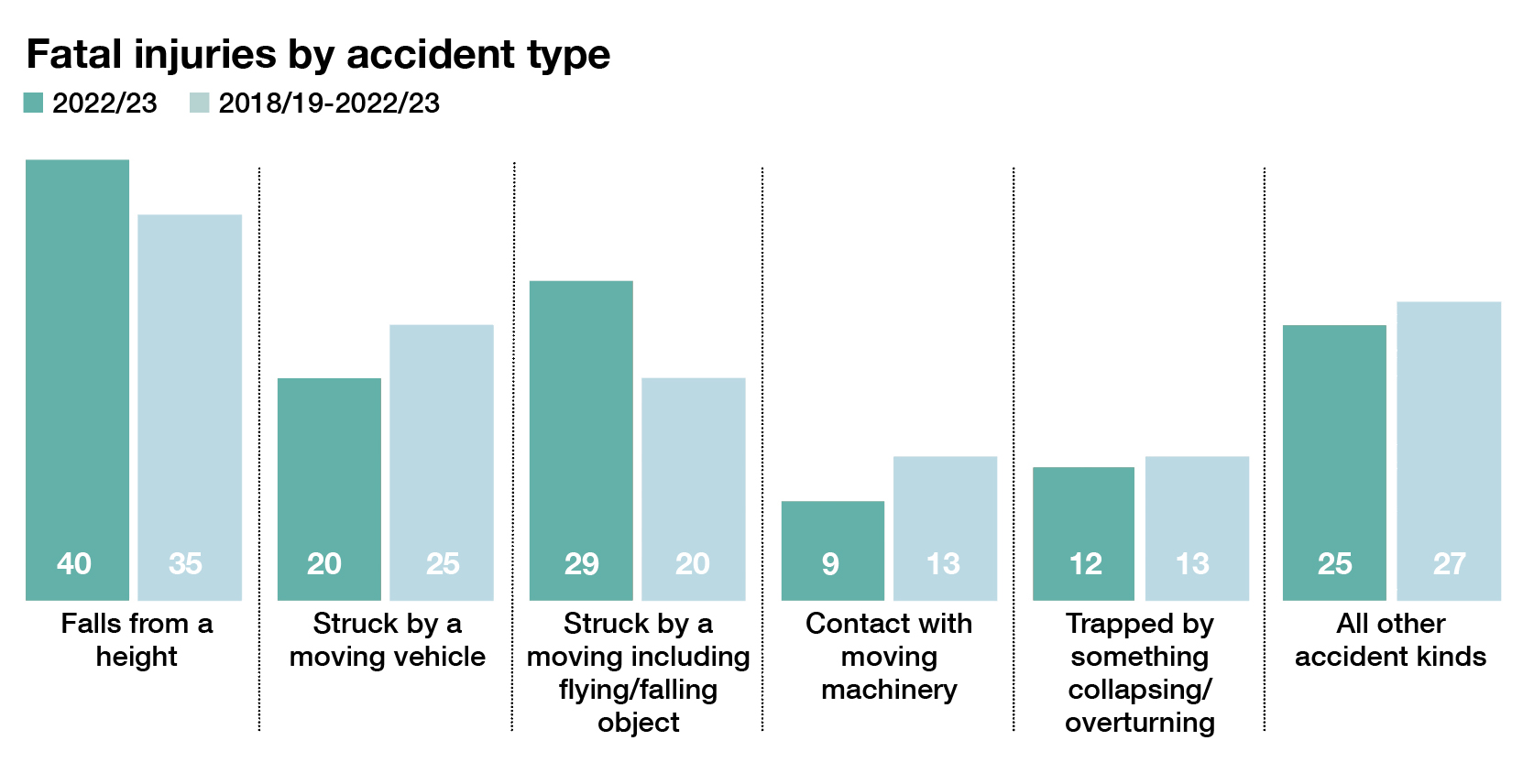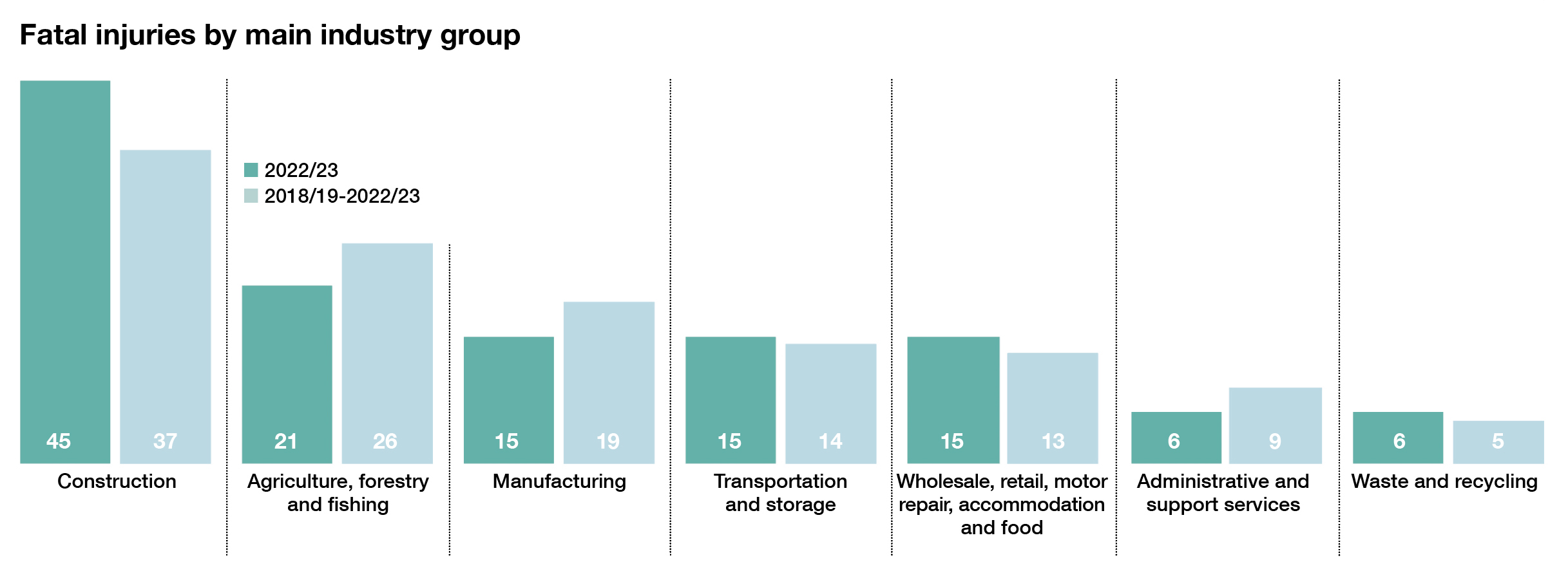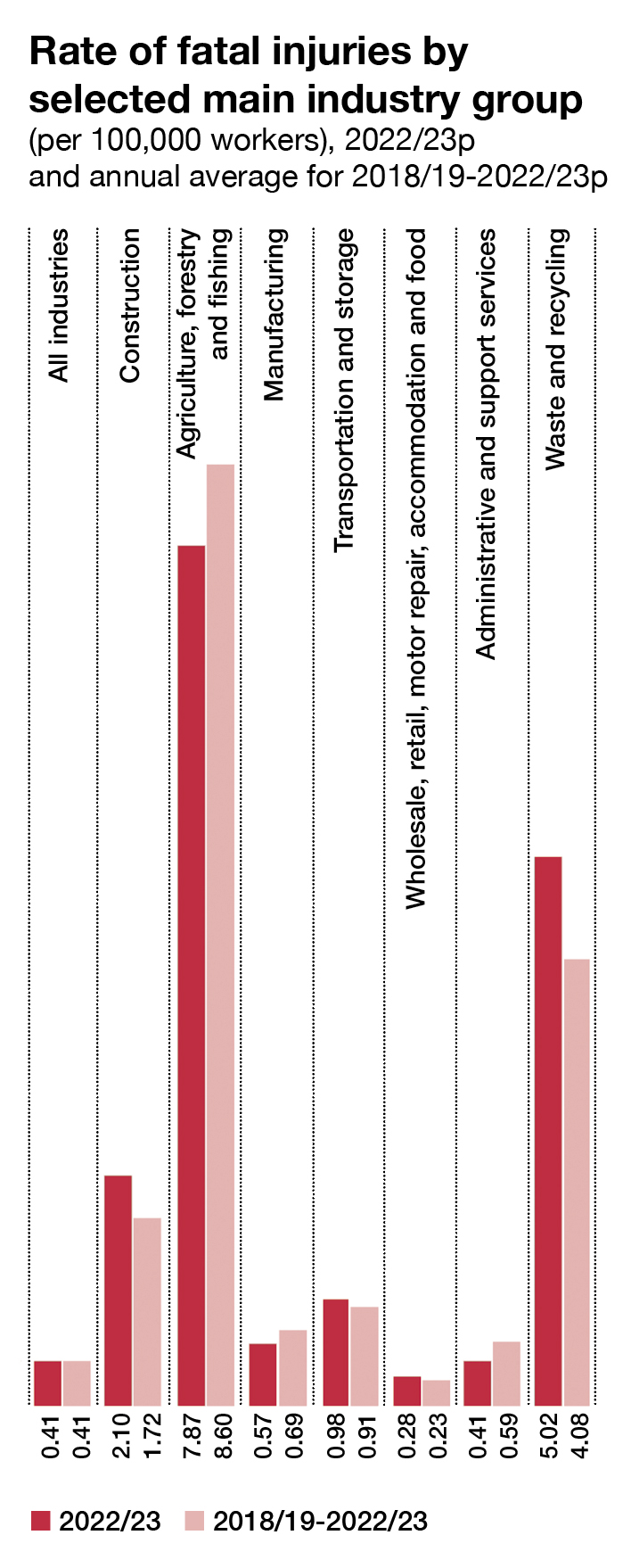
Britain’s construction sector recorded 45 fatal injuries during 2022/23, up from 29 the previous year, the latest Health and Safety Executive (HSE) data shows. The five-year average for fatal injuries in the construction sector is 37.
A total of 135 workers were killed across all industries in the country, covering the period from April 2022 to March 2023.
Construction remains the industry with the highest number of fatalities, followed by agriculture, forestry and fishing (21), manufacturing (15), transport and storage (15), and wholesale, retail and motor repair (15).


The three most common causes of fatal injuries across all industries were falls from height, being struck by a moving object and being struck by a moving vehicle.
Thirty-three of the total deaths recorded in this period were workers aged 60 and over, 99 were workers aged 16 to 59, and three of age unknown.
The rate of fatal injury in construction, which measures the rate of injury per 100,000 workers, has gone up to 2.10 in 2022/23 compared to an average of 1.72 from 2018/19 to 2022/23.
Construction deaths four times as high

The rate of fatal injury in construction, while around four times as high as the average rate across all industries, is considerably less than the rate in agriculture, forestry and fishing despite accounting for a greater number of cases, where the rate was 7.87 in 2022/23 and 8.60 in the previous period.
In June, a freedom of information request made by trade union Unite found that unannounced inspections by the HSE in the construction sector had fallen by nearly a third (32%) over the last decade.
During 2022/23, the safety watchdog carried out 7,647 spot checks – a 2% decline on the previous year when there were 7,793 inspections. In 2013/14, the safety watchdog made 11,303 proactive (unannounced) inspections.
Across all groups, a further 68 members of the public were killed following a work-related incident in 2022/23. This is a decrease of 20 from last year.
HSE has also published the annual figures for mesothelioma, a cancer caused by past exposure to asbestos fibres. The figures show 2,268 people died from the disease in 2021. This is a fall of 302 compared with the 2,570 deaths in 2020 and substantially lower than the average of 2,520 deaths per year over the period 2012-2019.
Men who worked in the building industry when asbestos was used extensively in the past continue to be most at risk of mesothelioma.











